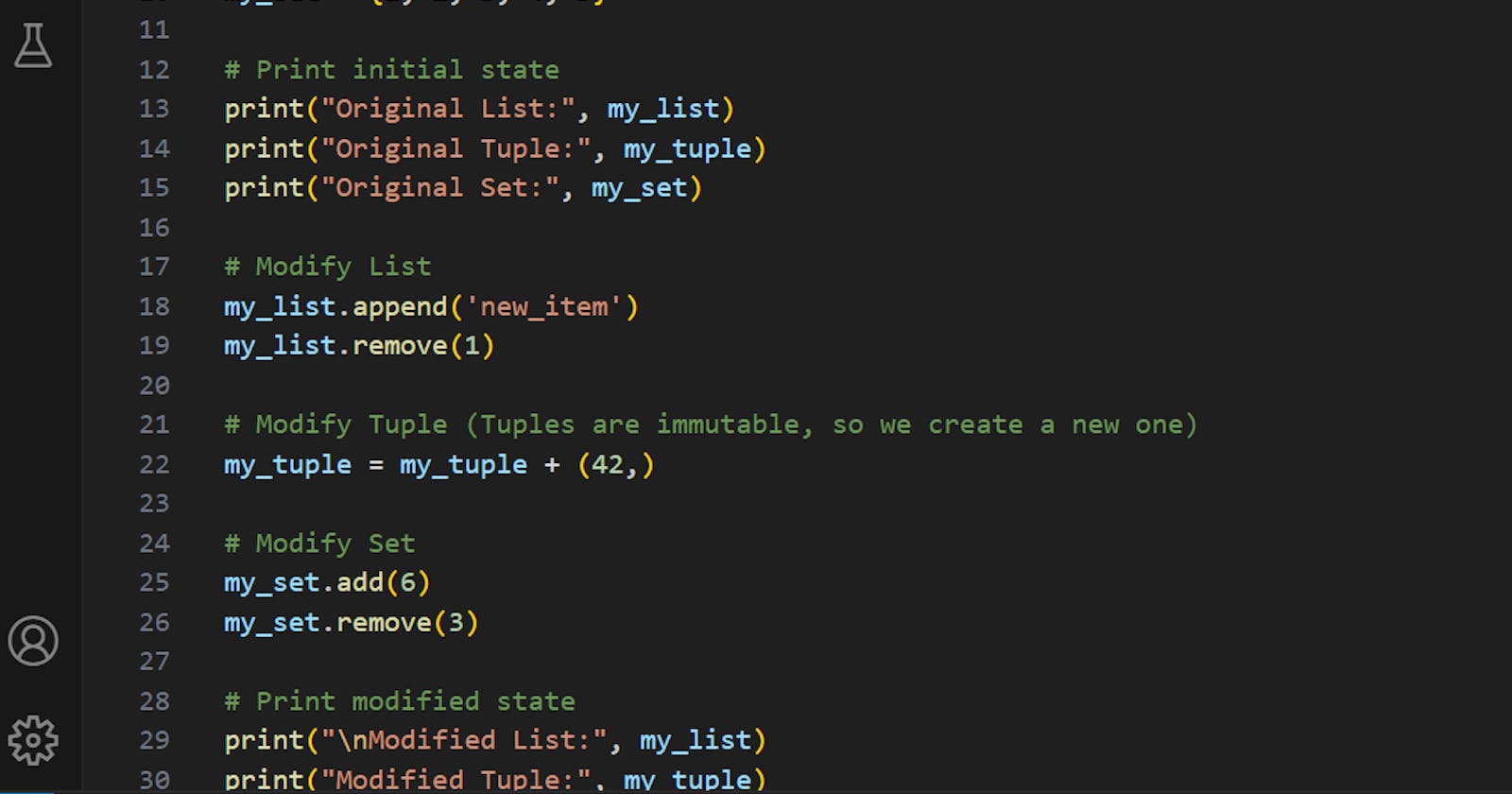Python Data Types📟 and Data Structures 💾for DevOps♾️
New day, New Topic.... Let's learn along 😉
Introduction📖📢
Hello Dosto! 🌟 Welcome🤗💗 to Day 14 of our DevOps journey🚢. Today, we're diving into the dynamic world of DevOps♾️, and Python🐍 is our trusted companion, making the journey incredibly easy. This introduction sets the stage for a day filled with coding adventures, hands-on practice, and a touch of Python magic. Are you excited? Let's embark on the Python-powered adventure together! 🌐
✳️Data Types in Python: 📊 Understanding the Basics
Python, being a versatile language, provides various data types that empower developers to handle information in different ways. Let's delve into the fundamental categories:
2.1 Numeric Types
In the realm of numeric types, Python offers a variety of data representations, including integers, floats, and complex numbers. Understanding these numeric types is crucial for performing mathematical operations efficiently.
2.2 Sequential Types
Sequential types, such as strings, lists, and tuples, allow us to organize and manipulate data in ordered sequences. Each type comes with its unique properties, offering flexibility in handling different kinds of information.
2.3 Boolean Type
The Boolean type, a simple yet powerful concept, deals with True and False values. Mastering Booleans is essential for decision-making processes and logical operations within your Python programs.
2.4 Set
Sets in Python provide an unordered collection of unique elements. They offer a handy toolset for mathematical operations, such as union, intersection, and difference, making them valuable in various scenarios.
2.5 Dictionaries
Dictionaries, the key-value pairs of Python, introduce a versatile way to structure and store data. They enhance the efficiency of data retrieval, making them a go-to choice for optimizing information storage.
In the upcoming sections, we'll explore each of these data types in detail, providing hands-on examples and practical insights to solidify your understanding. Get ready to unravel the magic of Python data types! 🐍💡
Data Structures in Python 🏗️
Python's strength lies not only in its data types but also in its ability to efficiently organize and manage data using various structures. Let's explore these essential data structures:
3.1 Lists: 📋 Flexible Arrays
Lists in Python are like the Swiss Army knife of data structures. They offer a dynamic and ordered collection of items, allowing us to store and manipulate data with utmost flexibility. Whether it's a sequence of numbers, strings, or a mix of both, lists cater to diverse needs.
3.2 Tuples: 📦 Immutable Collections
Unlike lists, tuples are immutable. Once created, their elements cannot be changed. This immutability brings advantages, such as ensuring data integrity and providing a secure way to store information that shouldn't be altered.
3.3 Sets: 🧑💼 Unordered Unique Elements
Sets bring a sense of uniqueness and orderlessness to the table. They excel at handling distinct elements, providing efficient methods for set operations like union, intersection, and difference. Ideal for scenarios where uniqueness is key.
3.4 Dictionaries: 📖 Key-Value Magic
Dictionaries, Python's answer to key-value pairs, unlock a realm of possibilities. With quick access to values using keys, dictionaries streamline data retrieval. They're the go-to choice when efficiency in data lookup is paramount.
In the upcoming sections, we'll delve into hands-on examples, allowing you to witness the power of these data structures in action. Get ready to witness Python's efficiency in organizing data! 🐍🏗️
Tasks: 🛠️ Hands-On Python Practice
Time to put our Python skills to the test! Let's dive into some hands-on tasks that will solidify your understanding of Python's data types and structures.
4.1 Differentiating Lists, Tuples, and Sets
Task: Create examples that showcase the differences between lists, tuples, and sets. Demonstrate their unique features and use cases. This exercise will give you a practical grasp of when to choose one over the other.
4.2 Extracting Favorite DevOps Tools from a Dictionary
Task: Given the dictionary of favorite DevOps tools, use Python's dictionary methods to extract and display your preferred tool. This exercise will illuminate the simplicity and power of Python dictionaries.
Hands on
Conclusion: 🎉
In short, we've delved into Python's data types and Data Structure —numeric, lists, dictionaries—all making data handling a breeze. A big "Thank You" to our readers! Your curiosity fuels our journey.all simplifying data handling. Remember, DevOps is a journey of constant learning. A heartfelt "Thank You" to our readers! Your curiosity propels us. Cheers to coding adventures and see you in the next chapter! Until next time, happy coding! 🙌🚀 #Python #DevOps
